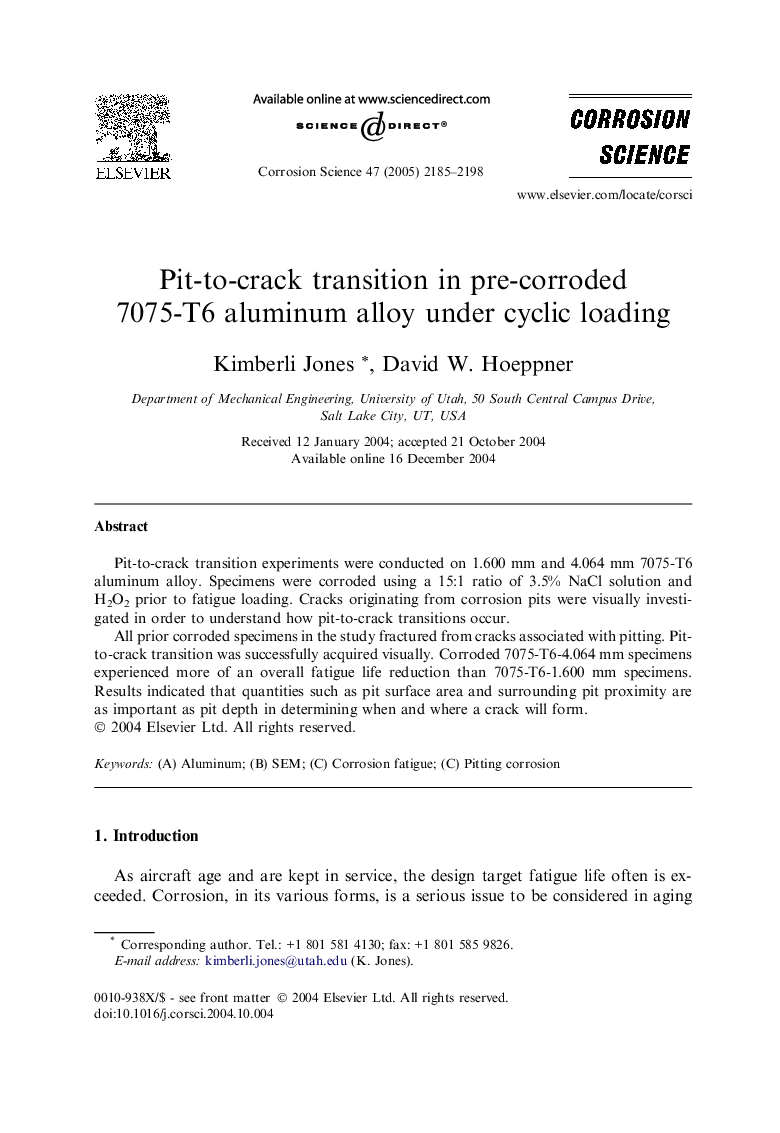| Article ID | Journal | Published Year | Pages | File Type |
|---|---|---|---|---|
| 1472335 | Corrosion Science | 2005 | 14 Pages |
Pit-to-crack transition experiments were conducted on 1.600 mm and 4.064 mm 7075-T6 aluminum alloy. Specimens were corroded using a 15:1 ratio of 3.5% NaCl solution and H2O2 prior to fatigue loading. Cracks originating from corrosion pits were visually investigated in order to understand how pit-to-crack transitions occur.All prior corroded specimens in the study fractured from cracks associated with pitting. Pit-to-crack transition was successfully acquired visually. Corroded 7075-T6-4.064 mm specimens experienced more of an overall fatigue life reduction than 7075-T6-1.600 mm specimens. Results indicated that quantities such as pit surface area and surrounding pit proximity are as important as pit depth in determining when and where a crack will form.
